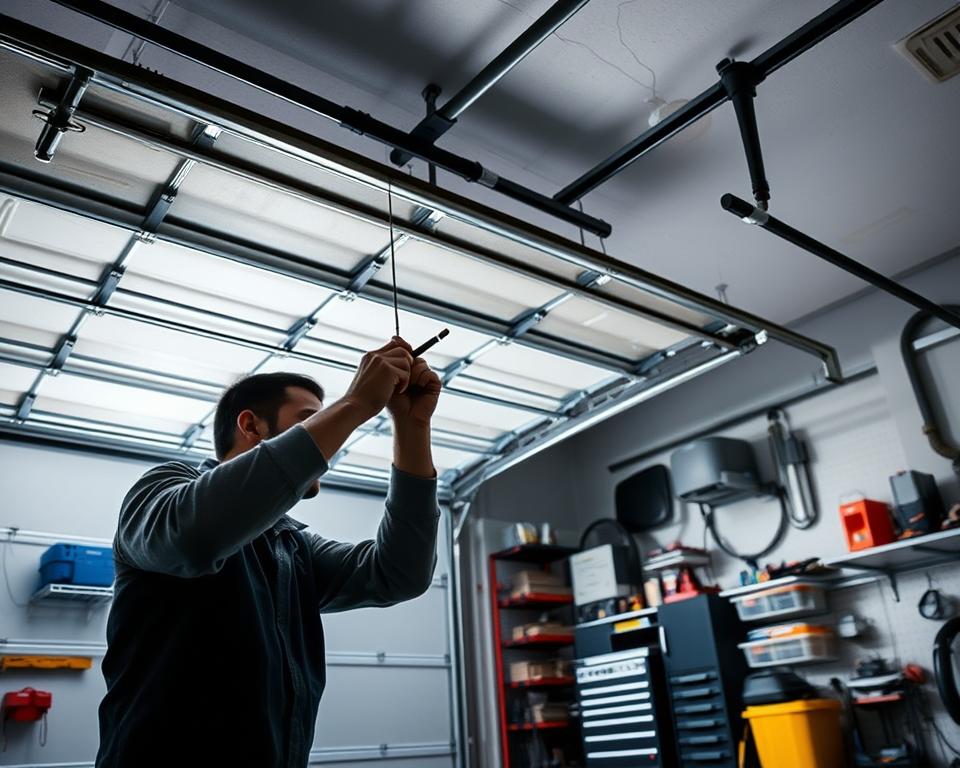Lebenswert Stage 1: Natural Formula for Infants
Looking for an pure formula that is akin to breast milk in terms of nutrition?
Lebenswert Stage 1 is a superior formula for babies aged 0 to 6 months. It originates from farms with Bioland certification. This guarantees your baby gets the highest nutrition devoid of harmful chemicals or artificial additives. By going beyond the EU organic guidelines, Holle Lebenswert Stage 1 supports your infant’s growth and development from the start.
Critical Summaries
- Lebenswert Stage 1 delivers a breast milk–like alternative.
- Ingredients are wholesome and sourced from Bioland farms.
- The formula is uncontaminated, without artificial additives.
- It goes beyond the rigorous EU organic rules.
- It supports the healthy development of newborns to 6‑month‑old babies.
Introduction to Lebenswert Stage 1
This formulation marks a notable advancement for parents who choose organic infant nutrition. Formulated in Europe, this formula reflects the nutritional essence of breast milk. It supports healthy growth and development. Created by the prestigious Holle Family brand about a decade ago, Lebenswert emphasizes offering quality without compromise.
The heart of Lebenswert Stage 1 lies in dependable nutrition for babies. In a world embracing organic, it distinguishes itself by emphasizing wholesome components. Parents seeking safe, nourishing options often choose this formula, reassured by its pledge to quality and sustainability.
For those prioritizing organic goods, Lebenswert Stage 1 provides a persuasive argument. It enables parents to make knowledgeable decisions on infant nutrition. These choices foster a child’s health from the start, echoing broader nutritional perspectives.

Understanding Organic Infant Formulas
Organic infant formulas ensure essential nutrients without harmful chemicals or artificial ingredients. Parents increasingly see organic labeling as crucial for quality nutrition. These products support holistic care, meeting the need for natural feeding choices.
The foundation of these formulas is the principles of organic farming. Made with crops grown absent of synthetic pesticides or fertilizers, they promote sustainability and health. By selecting organic, parents aid their child’s well-being and back eco-friendly practices.
One significant advantage of organic formulas is their nutrient profile. They are rich in vitamins and minerals vital for infant growth. For example, essential fatty acids, necessary for brain development, are included in many organic brands. Lebenswert Stage 1 stands out for its high-quality ingredients, offering parents peace of mind.
To sum up, knowledge of organic infant formulas allows parents to make choices that benefit their child’s health. Opting for products like Lebenswert Stage 1 promotes not only nutrition but also holistic care principles.
Lebenswert Stage 1: The Benefits
Lebenswert Stage 1 is favored by many parents for their infants. It’s designed to mirror breast milk, offering optimal nutrition with premium ingredients. Each component is chosen to provide vital nutrients vital for your baby’s growth and development.
Similarities to Breast Milk
Lebenswert Stage 1 mirrors breast milk in taste and nutrition. It uses organic lactose, omitting fillers like maltodextrin. This creates a clean, easily digested formula, fulfilling infants’ natural needs in their early stages.
High-Quality Ingredients
Lebenswert Stage 1’s premium components set it apart. It includes organic whey powder and select vegetable oils for nutritional balance. Parents can rest assured, knowing their baby gets an organic formula devoid of artificial additives.
Ingredients in Lebenswert Stage 1
Lebenswert Stage 1’s ingredients show its nutritional excellence and dedication to infant wellness. Its high-quality ingredients meet the needs of growing babies. It provides vital nutrients without harmful additives, ensuring a solid foundation for health.
Key Nutritional Components
Lebenswert Stage 1 blends organic skim milk, organic whey powder, and vegetable oils with essential vitamins and minerals. These infant formula components foster growth and development. They offer a healthy alternative to breast milk, tailored to an infant’s dietary requirements.
Free From Artificial Additives
Lebenswert Stage 1’s formula is devoid of artificial preservatives, refined sugars, and GMOs. It meets strict EU organic standards, ensuring a commitment to your child’s health. Choosing this formula means selecting cleanliness and top-notch quality for your infant.
How to Prepare Lebenswert Stage 1 Formula
Preparing Lebenswert Stage 1 formula is straightforward and ensures your baby gets essential nutrients. To make the formula correctly and safely, follow the steps below. Use the specific measuring scoop included with the formula. This ensures your baby’s feed is nutritious.
Step-by-Step Preparation Guide
- Start by boiling fresh water and allowing it to cool down to approximately 120 degrees Fahrenheit.
- Use the provided measuring scoop to add the correct amount of Lebenswert Stage 1 formula powder into the cooled water.
- Cap the bottle tightly and shake it well until the powder is completely dissolved.
- Before feeding, ensure the formula is at a safe temperature by testing a few drops on your wrist.
Feeding Tips for New Parents
To achieve a easier feeding experience, parents and infants can apply helpful strategies. Here are some effective tips:
- Hold your baby in a semi-upright position during feeding to help with digestion.
- Burp your infant regularly by gently patting their back to prevent discomfort.
- Observe your baby’s cues to identify their hunger and fullness signs.
- Clean all feeding equipment thoroughly after each use to maintain hygiene.
Nutritional Facts of Lebenswert Stage 1
Lebenswert Stage 1 nutritional details offer a precise blend of vital nutrients for infant growth. Every 100 ml of this organic infant formula delivers significant calories. It also has a well-chosen mix of proteins, carbohydrates, and fats.
Notably, Lebenswert Stage 1 includes essential fatty acids essential for brain and eye development. It also contains key vitamins and minerals like Vitamin A, D, and iron. These elements assist in an infant’s health and early developmental stages.
| Nutrient | Per 100 ml |
|---|---|
| Energy (kcal) | 68 |
| Protein (g) | 1.3 |
| Fat (g) | 3.6 |
| Carbohydrates (g) | 7.2 |
| Vitamin A (µg) | 60 |
| Vitamin D (µg) | 1.25 |
| Iron (mg) | 0.5 |
The comprehensive analysis shows Lebenswert Stage 1 fulfills infants’ nutritional needs. It comforts parents they’re providing a nutrient-rich formula vital for their babies’ best developmental results.
Feeding Guidelines and Chart
Lebenswert Stage 1 feedings ensure growing babies get vital nutrients. Parents use the feeding chart to find appropriate amounts by age. It’s a clear guide for 0 to 6 months, designed for their growth stages.
Recommended Daily Amounts
| Age (Months) | Daily Amount (Ounces) | Number of Bottles |
|---|---|---|
| 0–1 | 16–24 | 6–8 |
| 1–2 | 24–32 | 6–7 |
| 2–4 | 24–30 | 5–6 |
| 4–6 | 24–30 | 4–5 |
Age-Specific Recommendations
Parents should note these Lebenswert Stage 1 tips for their infant’s feeding:
- For newborns: Emphasize frequent, small feedings to begin a routine.
- For infants 1–2 months: Increase ounces as they grow.
- For infants 2–4 months: Watch for fullness cues to adjust feedings.
- For infants 4–6 months: Begin introducing solids while continuing formula.
Customer Reviews and Experiences
Parents share enthusiastic tales of their babies’ experiences with Lebenswert Stage 1. They say their infants are doing better, digesting the formula with ease, and showing significant health improvements. Feedback often highlights the formula’s high quality. Most agree that it has surpassed their expectations.
Testimonials from Parents
Parental reviews highlight several key advantages:
- Ease of digestion: Many infants are reported to have less tummy trouble compared to other formulas.
- Happier babies: Parents frequently mention their children seem more content and satisfied after feeding.
- Support for growth: Parents see healthy weight gain and development milestones being reached.
Common Feedback
The consensus across feedback platforms is clear:
- Many appreciate the absence of artificial additives, feeling reassured about the formula’s purity.
- Parents enjoy the convenience and simplicity of preparation, making their daily routines smoother.
- Overall, satisfaction with Lebenswert Stage 1 remains high, showcasing its popularity among discerning parents.
Where to Buy Lebenswert Stage 1
Seeking out premium organic baby formula, including Lebenswert Stage 1, can be straightforward. For those wondering where to obtain it, various avenues exist that offer convenience and accessibility. Retailers such as Love Organic Baby stock this item in their physical outlets. This allows parents to personally review the product’s packaging and nutritional content. Furthermore, these locations often feature staff who are knowledgeable about organic baby formulas, ready to assist.
Retail Outlets Like Love Organic Baby
For purchasing Lebenswert Stage 1, Love Organic Baby is a trusted option. This retailer not only focuses on organic offerings but also carries a variety of baby necessities. Customers enjoy the benefit of in-store consultations, which improve their shopping experience. Additionally, many of these outlets have promotions or loyalty programs. Such incentives make it more affordable for families to buy the essential formulas they need.
Online Buying Options
Online stores offer another easy method for acquiring Lebenswert Stage 1. Parents have the opportunity to browse multiple online platforms that specialize in organic baby goods. These platforms often guarantee the best prices and availability. They also provide detailed product descriptions, customer feedback, and the option for subscription services. This means automatic reordering is possible. Plus, shopping online can save valuable time by offering direct home delivery, a boon for busy parents.
| Store Type | Examples | Purchase Options |
|---|---|---|
| Retail Outlets | Love Organic Baby | In-store purchase |
| Online Stores | Various organic baby formula retailers | Home delivery, Subscriptions |
The Final Word
Lebenswert Stage 1 is an superb choice for parents committed to their baby’s health and nutrition. It uses top-tier ingredients and meets organic standards. This commitment supports superior development in infants.
The formula aims to mirror the nutritional value of breast milk. It’s ideal for those who prefer a product that supports healthy growth. It also upholds organic farming methods, offering a pure feeding option.
Selecting a formula that focuses on safety and quality ingredients is essential. With the organic baby formula market expanding, Lebenswert Stage 1 remains a top pick. It reassures parents about their child’s nutrition.









